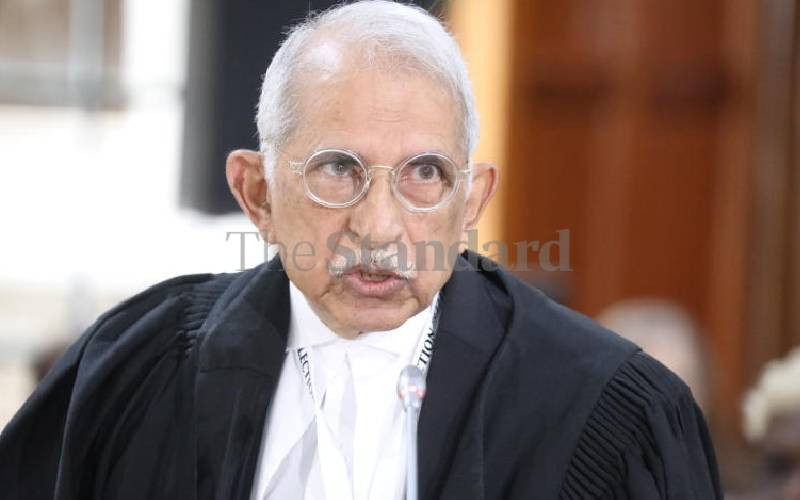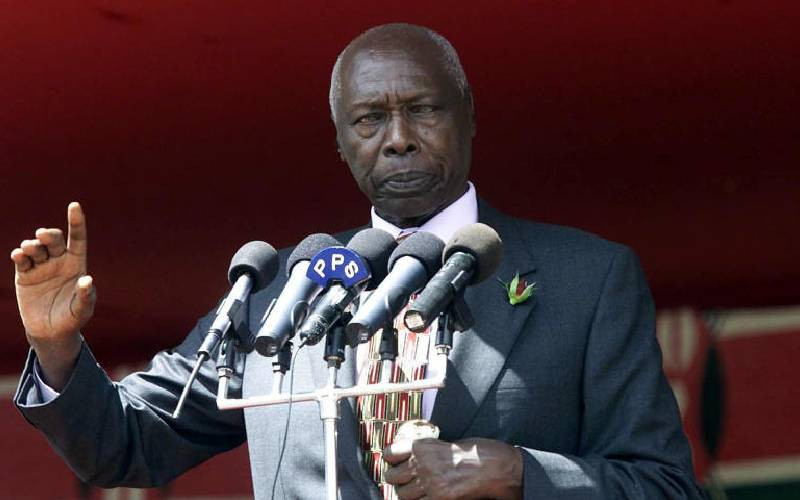By Oscar Obonyo
One of the political tragedies of the decade was the crumble of independence party, Kanu, in 2002.
Curiously, the party’s fortunes dwindled in the hands of Deputy Prime Minister, Uhuru Kenyatta, son to founding President and Kanu Chairman, Mzee Jomo Kenyatta.
In essence, between them the Kanu baton seems to have come to its destiny. While Kanu’s popularity had been on the decline, Uhuru’s rare historic gesture to back President Kibaki’s re-election bid in 2007 speeded the process.
In line with the practice elsewhere in the world, as Leader of Official Opposition, Uhuru was ideally supposed to lead the onslaught against the incumbent. But he chose to work with Kibaki, locking out Kanu from contention for the presidency.
Even at parliamentary and civic level, Kanu aspirants were compelled to fight out for nomination tickets with members of other parties under the PNU umbrella.
Geographical spread
The result of the move is that the party’s geographical spread and representation shrunk significantly. This was the trend since the repeal of Section 2A in 1991, that ended the party’s one-rule reign.
During the 1992 multiparty General Elections, the party claimed parliamentary victory in 100 constituencies, which was more than a half of the available 188. Five years later in 1997, Moi’s Kanu carried the day again but with a relatively lesser margin of 107 seats out of 210.
Kanu’s fortunes dipped further in 2002 with just 64 seats and a paltry 14 parliamentary seats (on paper) in the last elections.
However, former Gatanga MP David Murathe observes that Uhuru’s move to back Moi was a political strategy to help the party remain relevant beyond the highly emotive and ethnically polarised 2007 polls.
The apparent fall of Kanu was not extra-ordinary. It was a result of a spirited effort staged by opposition forces for decades. It was a persistent effort that at one point, Kibaki while serving as Moi’s Vice-President, dismissed as an attempt of futility "equivalent to trying to cut down a Mugumo (fig tree) with a razor blade".
However, the opposition forces considered Moi’s rule authoritarian and employed all sorts of tricks that nonetheless came to naught. Moi withstood their combined and mostly divided challenge for 15 years.
inside explosion
But as Lands Minister James Orengo, would later observe, help came courtesy of Raila: "We had tried to end Kanu’s 40-year-rule by engineering an explosion from outside without success. But it took an act of implosion by Raila to destroy it from within."
Stay informed. Subscribe to our newsletter
Mr Macharia Munene, professor of History and International Relations at United States International University, points out at the PM’s move as one that signaled the beginning of the end of Kanu.
"He joined Kanu in 2002 and walked away with the heart of the party just days to the General Elections," he observes. Moi had brought the NDP leader on board as part of his 2002 succession plot. But the scheme flopped when Moi identified Uhuru as his preferred successor. Raila accordingly led political bigwigs and fellow presidential hopefuls out of the party including VP Kalonzo Musyoka and Internal Security minister George Saitoti. The Kanu rebels joined Kibaki under Narc challenging a weakened Kanu at the 2002 polls. Kanu’s poor showing was surely anticipated.
To date, the push to re-energise the party is largely propelled from outside Parliament. Separately, Mu rathe reflects on Moi’s assertion when he left power that "Kanu will rule this country for next 100 years".
"Names of political parties might change, but the players remain Kanu including the big names now eyeing the presidency," says Murathe.
 The Standard Group Plc is a
multi-media organization with investments in media platforms spanning newspaper
print operations, television, radio broadcasting, digital and online services. The
Standard Group is recognized as a leading multi-media house in Kenya with a key
influence in matters of national and international interest.
The Standard Group Plc is a
multi-media organization with investments in media platforms spanning newspaper
print operations, television, radio broadcasting, digital and online services. The
Standard Group is recognized as a leading multi-media house in Kenya with a key
influence in matters of national and international interest.
 The Standard Group Plc is a
multi-media organization with investments in media platforms spanning newspaper
print operations, television, radio broadcasting, digital and online services. The
Standard Group is recognized as a leading multi-media house in Kenya with a key
influence in matters of national and international interest.
The Standard Group Plc is a
multi-media organization with investments in media platforms spanning newspaper
print operations, television, radio broadcasting, digital and online services. The
Standard Group is recognized as a leading multi-media house in Kenya with a key
influence in matters of national and international interest.







